On 28 October 2015 the space probe Cassini, which has been orbiting Saturn for the last 10 years, will pass within 50 km of the surface of Saturn’s moon Enceladus. This is an extremely close approach by an interplanetary spacecraft (by comparison the New Horizons mission only got as close as 12,500 km above the surface of Pluto) and will help us understand more about this icy moon.
Image from NASA
This post discusses this flyby and explains why, in many ways, Enceladus might be a better bet than Mars for finding life in our solar system.
Early views of extraterrestrial life
Throughout most of the twentieth century many scientists thought that there could be life on Mars. Indeed the famous American astronomer Percival Lowell (1855-1916) claimed to have seen through his telescope a large network of canals built by an intelligent civilization and even produced maps of the Martian canal network. These canals certainly provided great material for science fiction writers but they were probably all due to Lowell’s imagination!
Percival Lowell’s Martian Canals
A Cold Dry Mars
Hopes of life on Mars were dealt a big blow in the 1960s when the American and Soviet space probes showed that it is a very dry, cold, hostile world.
Most biologists believe that liquid water is needed for life to emerge and prosper. The atmospheric pressure on Mars was discovered to be less than 1% of the pressure of the Earth’s atmosphere, which is far too low to allow liquid water to exist and the lack of an atmospheric “blanket” means the night temperatures are very low. Even in summer at the equator it drops to -70 degrees C (ref1). Unlike the Earth, Mars does not have a significant magnetic field to protect the surface of the planet from deadly radiation. Therefore it is very unlikely that life could exist on the surface of Mars, although it is possible that primitive life forms could exist within rocks.
Another Candidate for Life
However in the last ten years another place where life could exist has emerged, Enceladus. It might at first sight appear to be an odd candidate. It is nearly ten times further away from the Sun than the Earth. At this distance the Sun’s energy is so weak that the surface temperature is on average -200 degrees Celsius. In addition it is very small, only 500 km in diameter, which is only 14% of the diameter of the Earth’s own moon. Because it is so small, the mass of Enceladus is so low that the surface gravity is only 1.1 per cent of the Earth’s gravity. So, on the surface of Enceladus a 12 stone (168 pound) astronaut would weigh only two pounds.
The weak gravity means that Enceladus should be unable to hold onto any form of atmosphere. Any gases should escape into space. It also has no magnetic field to shield its surface from lethal radiation. So it is safe to assume that it is impossible for life to exist on the surface of Enceladus.
Images courtesy of NASA
However, previous flybys by the NASA Cassini space probe yielded surprising results. They detected a thin atmosphere containing over 90 per cent water vapour together with trace amounts of nitrogen, carbon dioxide and methane. This atmosphere is thought to emanate from the volcanoes spotted by Cassini which pump large amounts of water vapour and other gases onto the surface of Enceladus, replenishing the gases which continually escape to space. In the same way, as the volcanoes on Earth sit over pockets of molten magma deep underground, the volcanoes on Enceladus, known as cryovolcanoes because they are so cold, form over pockets of water.
Image courtesy of Gordon P. Hemsley
Indeed many scientists strongly believe that for billions of years there have been warm underground oceans under the surface of Enceladus which contain the basic chemicals such as methane, formaldehyde, ammonia and carbon dioxide which are needed to form the more complex chemicals which are building blocks for the evolution of life.
However this does not mean that we expect to see fish swimming in these underground oceans! What is more likely is that, given water, an underground heat source and the raw chemicals, something more akin to single celled creatures and bacteria may have evolved on Enceladus.
What will the October 28 Flyby tell us?
The flyby will bring the spacecraft within 50 km of Enceladus’s surface near its South pole. It will pass through one of the icy volcanic plumes and its instruments will sniff the gases in the plume which will give a measure of the amount of hydrothermal activity going on. If there is a lot of hydrothermal activity then this could provide an energy source for life. It has a dust detector which will enable it to study the complex organic molecules found in the plume.
Unfortunately Cassini doesn’t have the instruments to detect life. That will have to wait until a future mission which may land on the surface and drill through the ice.
For information on the Enceladus flyby see the following link
http://saturn.jpl.nasa.gov/mission/flybys/enceladus20151028/
References

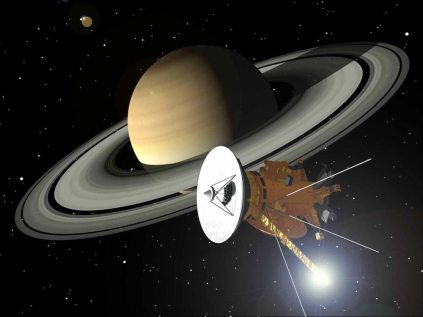
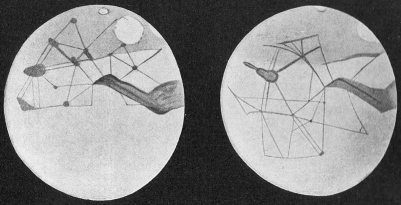
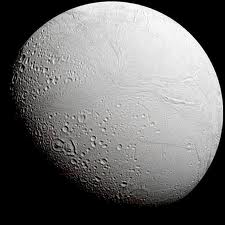
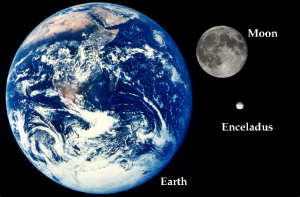
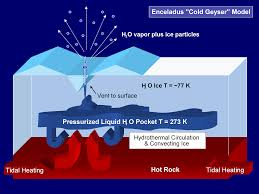
Interesting. Will look into updates. What did they find out? Also, unbelievable what a small rock it is! Anyway, great post. I’ve learned New stuff.
LikeLike
Hi there to every , since I am really keen of reading
this blog’s post to be updated on a regular basis.
It consists of pleasant information.
LikeLike
Thank you
LikeLike
Reblogged this on towerofbuckets.com.
LikeLike
If it is “unlikely” that life would exist (or have existed) on Mars, I’d like you to take a look at my latest upload “Was Percival Lowell partially right?”. If life does not exist, did not exist, on Mars, why do I keep finding very strong evidence (to say the least) to the contrary (as the accompanying images show clearly)?
LikeLike
[…] Source: Enceladus Flyby 28 Oct 2015 […]
LikeLike
Reblogged this on Stuart Aken and commented:
Some interesting facts for the fans of science and space here.
LikeLike
Have you read whether plumes were seen during the October 14th flyby?
LikeLike
The Oct 14 flyby passed roughly 2,000 km from Enceladus’s surface. About 40 times further away than the Oct 28 fly will pass. According to the NASA website for this flyby
http://saturn.jpl.nasa.gov/mission/flybys/enceladus20151014/
two plume observations were scheduled, but I have not yet (as of today 18/10/2005) seen the results
The Science Geek
LikeLike
Thanks.
LikeLike
Very interesting mark on the space exploration chart!
LikeLike